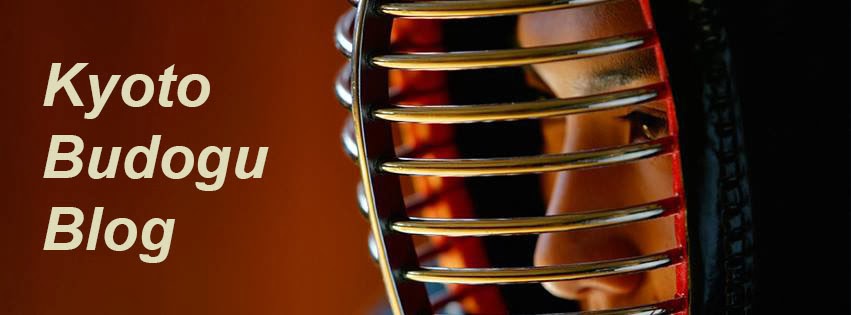Of course, I am referring to the poor Tare. Not born to receive
ippon, it offers passive protection and unassumingly recalls the noble shape of the ancient samurai
yoroi. But after all, what do we know about the humble Tare?
First of all, a Tare is virtually immortal. The only part that really wears out is the obi, that gets brutally stretched every time we wear our bogu. If the quality of the cotton is good, the obi can last years without too much fatigue - and in any case it can require a repair that we (or Mum or spouse or dojo friend) can easily make. The Tare can discolour with time, but usually it does it gracefully and just as gracefully it can assume a nice bend which adds to its looks.
Having said that, it seems pretty clear you are going to be stuck with your Tare for a very long time, unless you are the kind of kenshi that alternates several bogu or that can follow the fancy of purchasing the odd spare part from time to time. Your Tare, most of the times, is there to stay.
So, what can be the criteria to select your Tare? Everyone would yell: "
The more kazari ito, the better!", but this is a bit of trite way to evaluate the Tare of (half) of our Kendo life. Let`s recall the features that could be worthwhile exploring in our selection.
Number one: the weight.
In my Kendo career I stumbled upon very different Tare, whose weight would really span from the terribly heavy to the light as a feather. Given the fact that a Tare should protect, but not create an obstacle, in my opinion, the lighter, the better. The trend nowadays goes in this direction, luckily - the safety aspect is taken care of, but also the comfort is guaranteed. Tare are now lighter, thanks to the different types of padding employed and to the new ways of stitching. Let`s not forget that the Tare, together with the Men, has the wider extension of stitched Futon - the way it is stitched can play an important role.
One discovery that really impressed me has been the
Fukuro Nui: literally, the "bag sewing". Ordinary Tare are made of a sandwich of material and padding, which are kept together by stitching and then hemmed with neo-leather or deerskin strips. Actually, we have grown so accustomed to this way of building the Tare, that we consider the hemming as an integral part of the overall decoration, just as the aforementioned kazari ito. In truth, thanks to the
Fukuru Nui, the need for hemming is gone: the
odare and
kodare are made instead as bags, filled with padding, so there`s no necessity to reinforce the hem. The Tare becomes miraculously light and the look definitely changes: the beauty of the Tare sits in the very visible stitching and not anymore in the hemming (which, by the way, is very often subject to much more stress, even when sitting lazily in the bogu bag). I have become a big fan of
Fukuro Nui: maybe it is an acquired taste, I think it is going to grow.
 |
| Fukuro nui Tare |
 |
| Fukuro nui Tare |
Number Two: the look.
There is much more than the kazari ito. I think the best decorative part sits in the
kawakazari, which is actually BELOW and ABOVE the kazari ito. You can choose the shape of it (clouds and spades and hearts and arabesques and...), but the most striking feature is the way these shapes are designed: it could be an additional layer of neo-leather or deerskin, or, my favourite, an extra-dense superimposed stitching:
kumogata vs
kumozashi. Needless to say, the less layers, the lighter - I stick with my initial priority.
 |
| kumozashi |
 |
| kumogata |
Regarding the kazari ito, I don`t want to sound too snob and do not consider them at all in the picture. But I must say, I tend to favour contrasting kazari ito - crimson or dark green or tobacco-brown look AMAZING on indigo, I have seen so many examples by now that I would get as far as saying I could one day have a bogu all built with some striking colour contrast like that. After all, who cares, I am not going to take part in any All Japan Kendo Championship and in my old age I can be excused for some little quirks.













